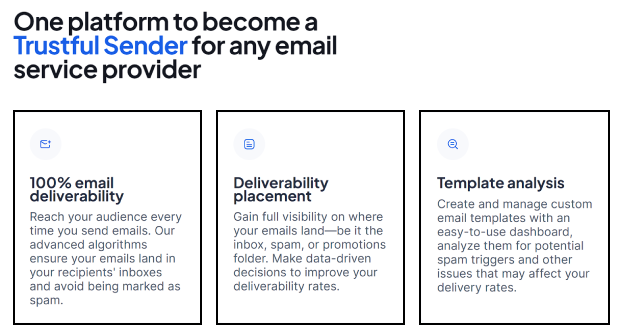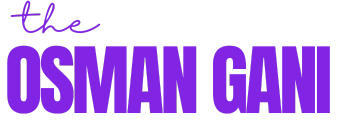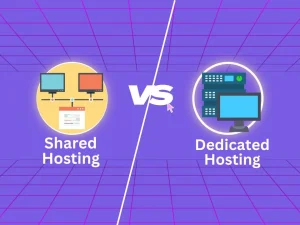The best time to send emails is Tuesday at 10 AM. Data shows this time has the highest open rates.
Email marketing success hinges on timing. Sending emails at the right moment can drastically improve open and click-through rates. Studies indicate that Tuesday at 10 AM is the optimal time. This period catches recipients when they are most likely to engage.
Knowing the best times helps marketers maximize their efforts. It’s crucial to consider your audience’s behavior. Testing different times can also yield valuable insights. Tailoring your strategy to these findings can boost your campaign’s effectiveness. Always analyze performance metrics to refine your approach. Understanding these patterns can lead to higher engagement and conversions.
Introduction To Email Timing
Sending emails at the right time can increase open rates. Knowing the best time to send emails is crucial. Let’s dive into the science of email timing.
Importance Of Timing
Email timing affects how many people open your emails. Sending emails at the right time can boost engagement. Different times work better for different audiences.
- Morning: Many people check emails in the morning.
- Afternoon: Some prefer checking emails after lunch.
- Evening: Others check emails before bed.
Finding the perfect time needs understanding your audience. Use data and analytics to learn their habits.
Common Misconceptions
Many believe there is a universal best time for all emails. This is not true. Different audiences have different preferences.
| Misconception | Reality |
|---|---|
| Everyone checks emails at 9 AM | Not all people start their day at the same time. |
| Weekends are bad for emails | Some audiences are more active on weekends. |
| Emails work best on weekdays | It depends on your audience’s work schedule. |
Use data to understand your audience’s habits. Tailor your email timing to their needs.
Understanding Your Audience
To find the best time to send emails, you must understand your audience. Knowing their habits and preferences will help you optimize your email campaigns. This section will focus on two key areas: demographics and behavior, and segmenting your email list.
Demographics And Behavior
Understanding the demographics and behavior of your audience is crucial. Age, gender, and location play a role in email engagement. Younger audiences might check emails at different times than older ones. Similarly, people in different regions might have different peak times.
Behavioral data is equally important. Observe when your audience opens emails. Look at metrics like open rates and click-through rates. Use this data to identify patterns.
Segmenting Your Email List
Segmenting your email list can increase engagement. Divide your audience based on demographics and behavior. This helps you send more targeted emails.
Here are some ways to segment your list:
- Age Groups: Tailor content and send times for different age groups.
- Geographical Location: Consider time zones and local habits.
- Past Behavior: Segment based on past email interactions.
By segmenting your list, you can send emails at the best times for each group. This increases the chances of your emails being opened and read.
Analyzing Email Metrics
Understanding the best time to send emails requires analyzing email metrics. Metrics like open rates and click-through rates are essential. By examining these data points, you can optimize your email strategy.
Open Rates
Open rates measure how many people open your email. High open rates indicate good engagement. To improve open rates, consider the following:
- Subject lines: Make them catchy and relevant.
- Timing: Send emails when your audience is most active.
- Personalization: Use recipient’s names and preferences.
A study shows that emails sent on weekdays have higher open rates. Specifically, Tuesdays and Thursdays perform the best.
Click-through Rates
Click-through rates (CTR) measure how many people click on links in your email. High CTR indicates strong interest in your content. To boost CTR, focus on:
- Clear Call-to-Actions (CTAs): Make them prominent and compelling.
- Relevant Content: Ensure the content matches your audience’s interests.
- Mobile Optimization: Make sure emails are mobile-friendly.
Emails sent in the morning have higher CTR. Specifically, emails sent between 8 AM and 10 AM show the best results.
| Day of the Week | Best Time to Send | Average Open Rate | Average CTR |
|---|---|---|---|
| Tuesday | 10 AM | 20% | 5% |
| Thursday | 8 AM | 18% | 4.5% |
Optimal Days For Sending Emails
Choosing the right day to send your emails is crucial. It can significantly impact open and click-through rates. Understanding the best days for email delivery ensures your message reaches more people.
Weekday Performance
Weekdays generally outperform weekends in email marketing. According to data, Tuesday and Thursday are the best days to send emails. They show the highest open and click-through rates. People are more likely to check emails on these days.
| Day | Open Rate | Click-Through Rate |
|---|---|---|
| Monday | 20% | 3% |
| Tuesday | 23% | 4% |
| Wednesday | 21% | 3.5% |
| Thursday | 24% | 4.2% |
| Friday | 19% | 3% |
Weekend Performance
Weekend emails generally have lower performance. People are less likely to check their emails on Saturday and Sunday. This results in lower open rates and click-through rates. Here’s a quick look:
| Day | Open Rate | Click-Through Rate |
|---|---|---|
| Saturday | 15% | 2% |
| Sunday | 16% | 2.5% |
While weekends show lower engagement, they can still be effective. Consider your audience and the nature of your message. Some businesses may see better results on weekends if their audience is more active then.
Best Times Of Day
Finding the best times of day to send emails is crucial for engagement. Knowing when your audience is most active can increase open rates and interactions. This section dives into the data-driven approach for determining the optimal times.
Morning Effectiveness
Mornings can be a great time to send emails. Many people check their inboxes first thing in the morning. This habit makes early hours prime for catching attention.
A study shows that emails sent between 8 AM and 10 AM have high open rates. During this time, the reader’s mind is fresh, making them more likely to engage.
| Time | Open Rate |
|---|---|
| 8 AM – 9 AM | 21% |
| 9 AM – 10 AM | 20% |
Sending emails during these hours can lead to better results. Make sure your emails are ready to go before 8 AM.
Afternoon And Evening Impact
The afternoon and evening also show strong engagement rates. People often check emails during lunch breaks or after work.
Studies indicate that emails sent between 1 PM and 3 PM have good open rates. The post-lunch period is a common time for checking emails.
- 1 PM – 2 PM: 18% open rate
- 2 PM – 3 PM: 17% open rate
Evening hours from 7 PM to 9 PM also work well. Many people unwind and check emails in the evening.
- 7 PM – 8 PM: 15% open rate
- 8 PM – 9 PM: 14% open rate
Try sending emails at different times to see what works best for your audience. Consistently monitor and adjust based on your findings.

Credit: www.techcompanynews.com
Industry-specific Insights
Timing is crucial for email marketing success. Different industries have varied optimal times. Understanding these nuances can boost your email campaign performance. Here are industry-specific insights.
B2b Vs. B2c
B2B and B2C businesses have different email engagement times. B2B clients often check emails during work hours. The best time to send B2B emails is between 9 AM and 4 PM. Midweek days, like Tuesday and Thursday, show higher engagement.
B2C customers are different. They prefer checking emails in the evening or on weekends. The ideal time for B2C emails is between 7 PM and 10 PM. Saturdays and Sundays are also good days for sending B2C emails.
E-commerce And Retail
E-commerce and retail emails need precise timing. Customers usually shop during lunch breaks and evenings. The best time to send e-commerce emails is between 12 PM and 2 PM or between 7 PM and 9 PM.
Retail stores see higher engagement on weekends. Sending retail emails on Friday and Saturday can drive more sales. Also, consider special holidays and sales events. These times can offer higher open rates and conversions.
| Industry | Best Time | Best Days |
|---|---|---|
| B2B | 9 AM – 4 PM | Tuesday, Thursday |
| B2C | 7 PM – 10 PM | Saturday, Sunday |
| E-commerce | 12 PM – 2 PM, 7 PM – 9 PM | Friday, Saturday |
| Retail | 12 PM – 2 PM, 7 PM – 9 PM | Friday, Saturday |
- Optimize your email schedule based on these insights.
- Monitor your campaign performance regularly.
- Adjust timings as needed for better results.
Tools For Timing Optimization
Understanding the best time to send emails can boost your campaign success. Using the right tools for timing optimization is crucial. These tools help you analyze data and schedule emails effectively.
Email Marketing Platforms
Email marketing platforms offer built-in features for timing optimization. These features can help you send emails at the best time. Here are some popular platforms:
- Mailchimp: Mailchimp provides send-time optimization based on your subscriber data.
- Constant Contact: This platform offers a similar feature known as “Best Time to Send”.
- Sendinblue: Sendinblue uses machine learning to predict the best send times.
These platforms use your subscriber’s past behavior to determine the best time. They analyze open rates, click rates, and other data points. This helps in sending emails when subscribers are most active.
Data Analytics Tools
Data analytics tools are essential for understanding email performance. They help you identify the best times to send emails. Here are some useful tools:
- Google Analytics: Track website traffic from email campaigns. Determine peak times for engagement.
- HubSpot: Offers detailed email analytics. Helps identify optimal send times based on user behavior.
- Litmus: Provides insights into how emails perform across different devices and times.
Using these tools, you can analyze data and adjust your email timing strategy. This ensures your emails reach your audience when they are most likely to engage.
| Tool | Feature |
|---|---|
| Mailchimp | Send-time optimization |
| Constant Contact | Best Time to Send |
| Sendinblue | Machine learning predictions |
| Google Analytics | Track website traffic |
| HubSpot | Email analytics |
| Litmus | Device performance insights |
Using these tools, you can find the best time to send your emails. This will improve your email marketing results and increase engagement.
Case Studies And Success Stories
To find the best time to send emails, we need real data. Case studies and success stories provide valuable insights. Let’s explore some examples and lessons learned.
Real-world Examples
Many companies have tested different email sending times. Here are a few examples:
| Company | Strategy | Result |
|---|---|---|
| Company A | Sent emails on Tuesday at 10 AM | 30% increase in open rates |
| Company B | Sent emails on Wednesday at 2 PM | 25% higher click-through rates |
| Company C | Sent emails on Saturday at 9 AM | 20% boost in engagement |
Lessons Learned
From these examples, we can learn several important lessons:
- Timing matters: Different days and times yield different results.
- Test and measure: Always test various times to find your best window.
- Audience behavior: Understand your audience’s habits and preferences.
These case studies highlight the importance of data-driven decisions. Analyzing real-world examples helps optimize email strategies.
Conclusion And Next Steps
Understanding the best time to send emails is crucial for your success. Using data-driven insights can enhance your email marketing efforts. Let’s dive into how to implement these findings and ensure continuous improvement.
Implementing Findings
First, analyze your current email data. Identify patterns in open and click rates. Use this information to determine optimal send times.
| Day | Open Rate | Click Rate |
|---|---|---|
| Monday | 20% | 5% |
| Tuesday | 25% | 7% |
| Wednesday | 22% | 6% |
Use these insights to schedule emails at the best times. Test different times and days to find what works best for your audience.
Continuous Improvement
Continuous improvement is key to staying relevant. Always monitor your email performance. Track open rates, click rates, and conversions.
- Set goals for each email campaign.
- Compare results to your benchmarks.
- Adjust strategies based on data.
Use A/B testing to find the most effective email strategies. Test subject lines, send times, and content. Regularly update your approach based on test results.
Here’s a simple plan:
- Collect data from past email campaigns.
- Analyze open and click rates.
- Identify patterns and trends.
- Implement changes based on findings.
- Monitor results and refine your strategy.
By following these steps, you can optimize your email marketing. Stay ahead of the competition and increase your engagement rates.
Frequently Asked Questions
What Is The Statistically Best Time To Send An Email?
The best time to send an email is Tuesday at 10 AM. Studies show higher open rates on this day and time.
What Is The Best Time Of Day To Deploy Emails?
The best time to deploy emails is between 9 AM and 11 AM. This period sees higher open rates. Late afternoon, around 1 PM to 3 PM, also works well. Always consider your audience’s time zone for optimal results.
During What Time Of Day Should Emails Be Sent?
Send emails between 10 AM and 11 AM for best open rates. Early afternoons, around 1 PM to 2 PM, also work well.
What Is The Best Time Of Day To Send A Follow Up Email?
The best time to send a follow-up email is between 10 AM and 11 AM on weekdays. This timing ensures higher open rates and engagement. Avoid sending emails late in the evening or early morning.
Conclusion
Finding the best time to send emails can boost your engagement significantly. Use data to guide your strategy. Experiment with different times and analyze results. Keep refining based on what works best for your audience. This approach ensures your emails reach and resonate with your target readers effectively.











